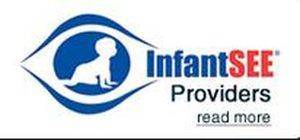What you need to know if your child is Nearsighted
First- Nearsightedness, also known as myopia, is a common problem leading to blurred vision for objects far away. For kids, seeing the chalkboard in class becomes difficult and spotting a fly ball while in outfield, tough and possibly a little dangerous. Myopia usually results from the eyeball growing too long during childhood, so light focuses in front of, rather than on the back surface of the eye, the retina.
Second- Heredity is a significant factor in your child’s chances of developing myopia. If both parents are nearsighted, the odds are six times greater that their children will be nearsighted, compared to if neither parent is.
Third- More and more people are becoming myopic. In the early 1970’s 25% of North Americans were myopic. Today the prevalence is roughly 40%. In some parts of the world- in Asia for example- myopia is reaching epidemic proportions with over 80% of teens in some countries being myopic.
Fourth- Children who spend significant time outdoors, in natural light, focusing on distant objects have a lower risk of becoming myopic than kids who spend their time indoors glued to digital devices. Getting your kids outside to play – a couple of hours a day is a goal to shoot for - seems to be a real factor in lowering your children’s risk of becoming myopic. This is especially true before myopia develops, although we’re not sure if it’s due to the light, the distance rather than near focusing, the richness of the visual environment (variations in sizes, textures, colors, brightness, distances, movement, etc..) or a combination a many factors.
Fifth- Myopia is more than just the inconvenience of needing to rely on glasses or contact lenses to see clearly at a distance. Many complications later in life are associated with myopia, including:
- Cataracts- clouding of the lens of the eye. This is very common as one reaches their 60s, 70s and beyond, but often begin sooner in more myopic individuals.
- Glaucoma- damage to the optic nerves frequently associated with increased pressure in the eye. Nearsighted individuals are 2 to 3 times more likely to develop glaucoma- a disease that can lead to serious vision loss.
Detached Retina or retinal holes or tears - The more nearsighted a person is, the longer and more stretched their eye is, on average. This leads to the retina being thinner, more fragile and more prone to damage and potential permanent vision loss.
Sixth – There are now approaches to manage the development of myopia, and often control it to the point of reducing eye health risks. See our other pages in this section for more information on these new therapies.
A Testimonial from one of our Patients:
My daughter Grace is now in her 3rd year of Ortho-K treatment with Dr. Jacobs. We are very happy with our experiences working with the doctors and the friendly staff.
When she began, a number of designs were necessary, particularly for her right eye, due to the shape of her cornea. The doctors eventually consulted with an expert colleague in NJ in order to produce a mold that worked great for that eye. We really appreciate that there were never any additional charges even as additional molds were ordered to get it just right.
This year, Grace's left eye corrected vision got worse. Dr. Jacobs redesigned the lens and it was a success at the first try! Grace got 20/20 vision in both eyes and her degree of myopia has stayed the same over the past 2 years! One of our primary goals when we started Ortho-K was to slow down the progression of her myopia. We are very happy that it has worked! Another thing we really appreciate working with these doctors is that they are very patient and helpful in answering all our questions. They also allow us to see the cool pictures of the corneal topography and show us the comparisons from the past images to current image. The staff is very welcoming and helpful as well! We enjoy our visits there!
Claire Shen - Grace's Mom




